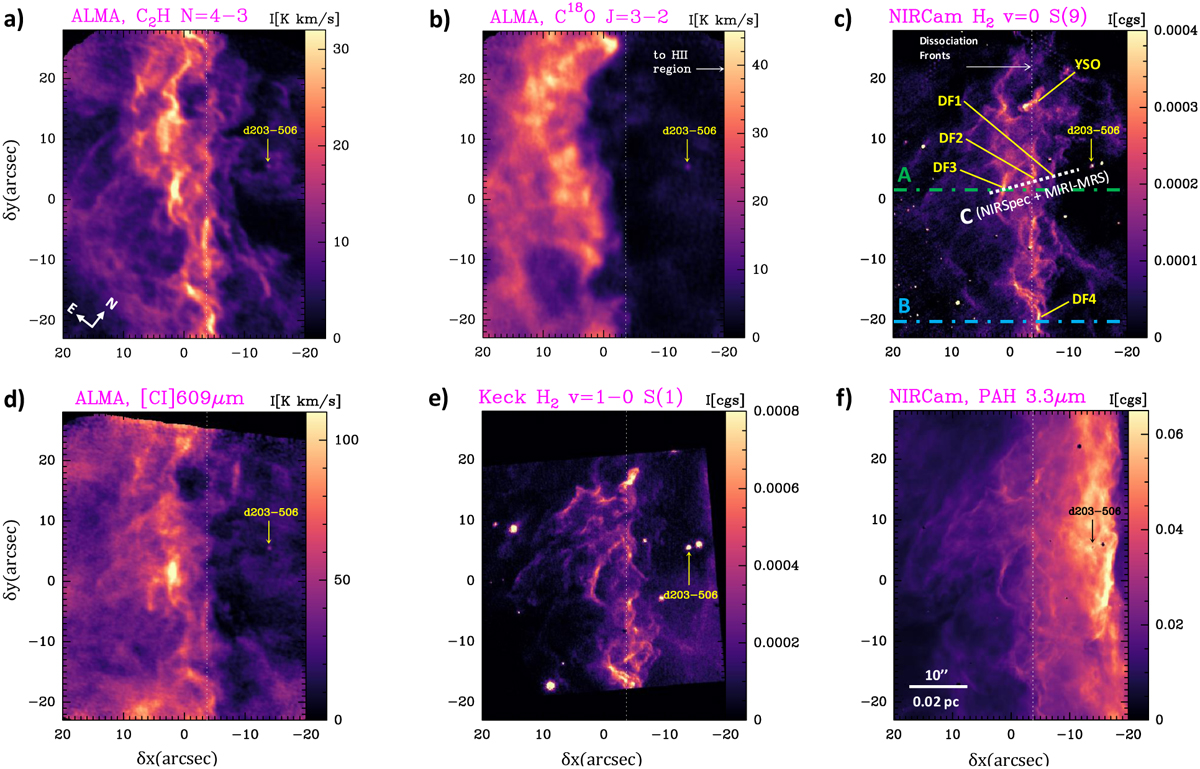Fig. 2

Download original image
ALMA, JWST/NIRCam, and Keck images of the Orion Bar PDR. We rotated all images to bring the FUV-illuminating direction from the Trapezium stars into the horizontal direction and from the right. The center of all images is at α(2000) = 5h35m20.50s; δ(2000) = −05∘25′21.4′′. The vertical dashed white line marks the approximate position of the main H2 DFs parallel to the Bar. (a) C2H N = 4–3 and (b) C18O J = 3–2. (c) NIRCam F470M–F480M image, a proxy of the H2 v = 0 S (9) line at 4.69 μm (Habart et al. 2024). Dashed and dotted lines show the position and orientation of the intensity crosscuts A, B (see Fig. 3), and C (the JWST spectroscopy cut, Fig. 7) discussed in the text. (d) [C I] 609 μm. (e) Keck/NIRC2 image around the H2 v = 1–0 S (1) line at 2.2 μm (Habart et al. 2023). (f) NIRCam F335MR–F330M image, a proxy of the AIB emission at 3.3 μm (Habart et al. 2024). An arrow marks the position of protoplanetary disk d203-506. The units “cgs” refer to erg s−1 cm−2 sr−1. We show more details in the combined RGB images in Fig. C.3.
Current usage metrics show cumulative count of Article Views (full-text article views including HTML views, PDF and ePub downloads, according to the available data) and Abstracts Views on Vision4Press platform.
Data correspond to usage on the plateform after 2015. The current usage metrics is available 48-96 hours after online publication and is updated daily on week days.
Initial download of the metrics may take a while.


